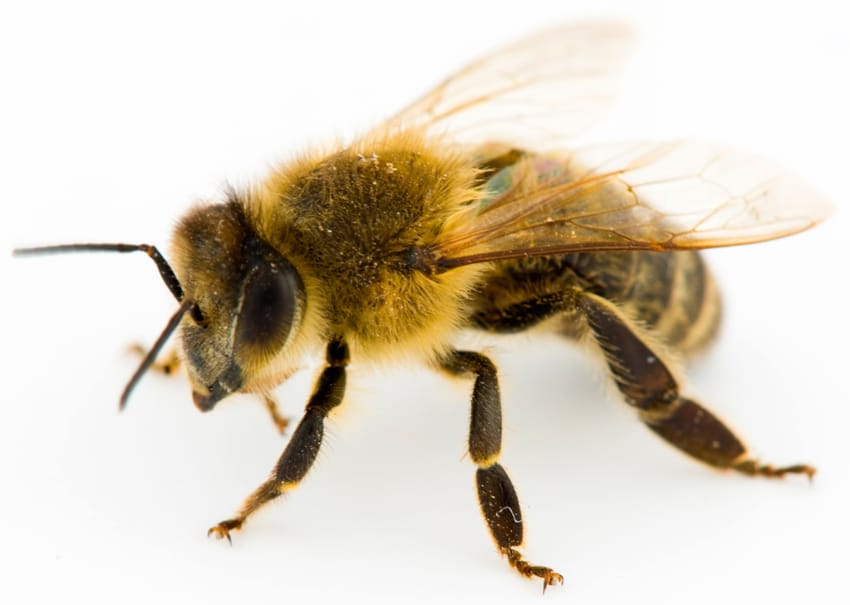Bees
Bumblebees are often mistaken for honey bees, however they are rounder, larger and furrier and come with a variety of coloured stripes across the end of their tails. These are in great danger and currently face extinction.
Usually, unless a hive is approached too closely or bees are under serious threat, they are unlikely to sting. Even swarming bees, although often frightening, tend not to.
Like wasps, bees form colonies, each of which has one fertile female or ‘Queen’ that lays all of the eggs. Worker bees usually live for 6-7 weeks, but a Queen can live for up to 7 or 8 years.
Queens can lay up to 1800 eggs per day, but the average for a year is about 900 per day and more than 1 million during her life time.


Importance
Because they are so beneficial for their production of honey and beeswax, many colonies are ‘owned’ by beekeepers who often move hives around in order to pollinate crops.
Although swarms of bees can be frightening, most would be unlikely to sting unless under serious threat or if a hive is approached too closely. Some bees cannot sting at all and others don’t have a strong enough sting to pierce the skin.
Wasps and bees are often mistaken for each other as they have a number of similarities, however, wasps are a much higher threat than bees and it is beneficial to be able to recognise the difference. For some differences between the two, visit Bees v Wasps.
Protectahome Control
Protectahome recommend contacting The British Beekeepers Association for advice and support on removing swarms of bees safely and efficiently. Protectahome are unable to remove bees unless it is extenuating circumstances and only as a last resort. This is not only due to the importance of honey bees to the environment, but also because due to pollination, any insecticides used could then cross-contaminate, becoming a danger to other insects and animals. Therefore, we recommend a local beekeeper as the best option to remove a swarm, if possible.
For more information on Pest Control and Bee Removal by Protectahome and associated services we provide, please see our Case Studies or to speak to our Pest Control Department please Contact Us on 0800 055 6966 or alternatively email us via pestcontrol@protectahome.co.uk









